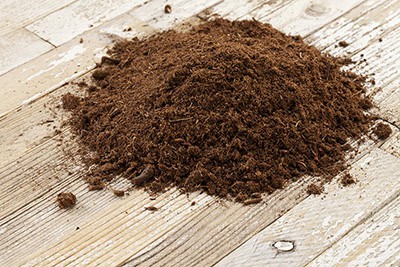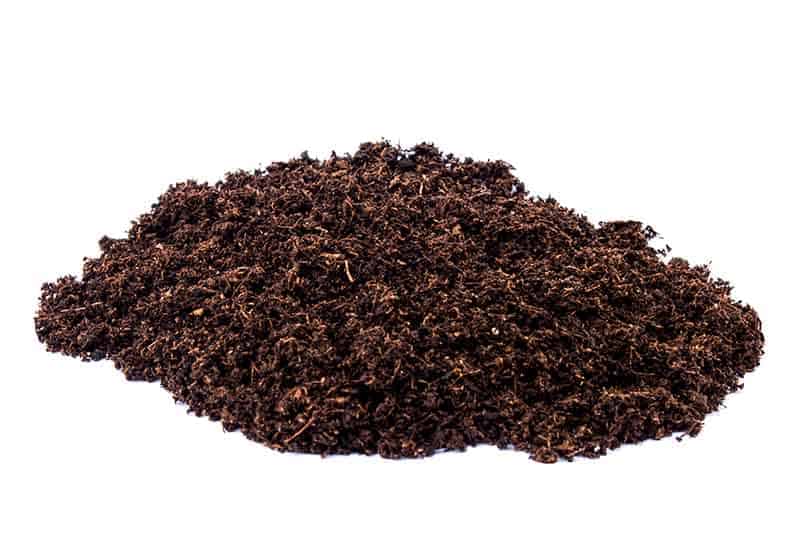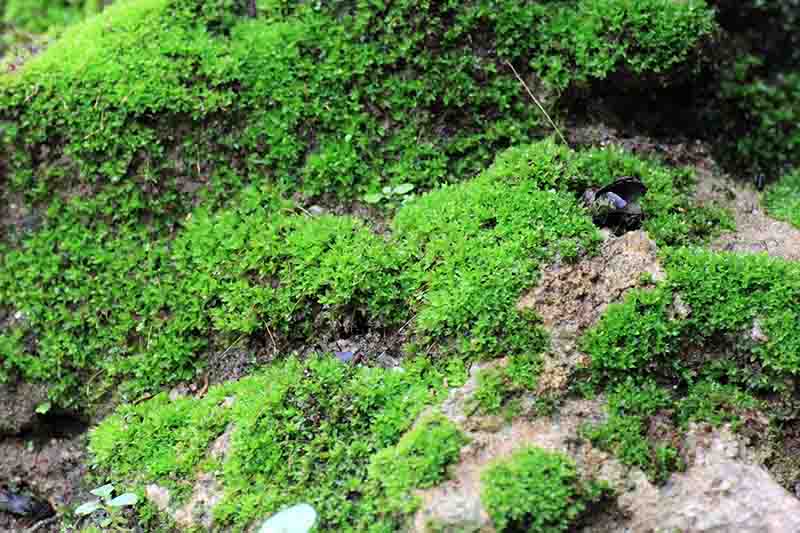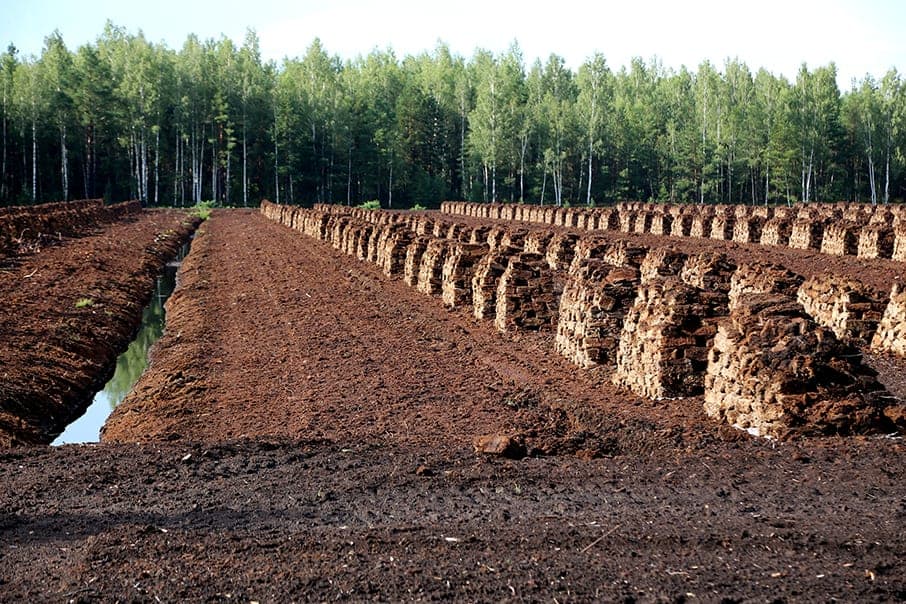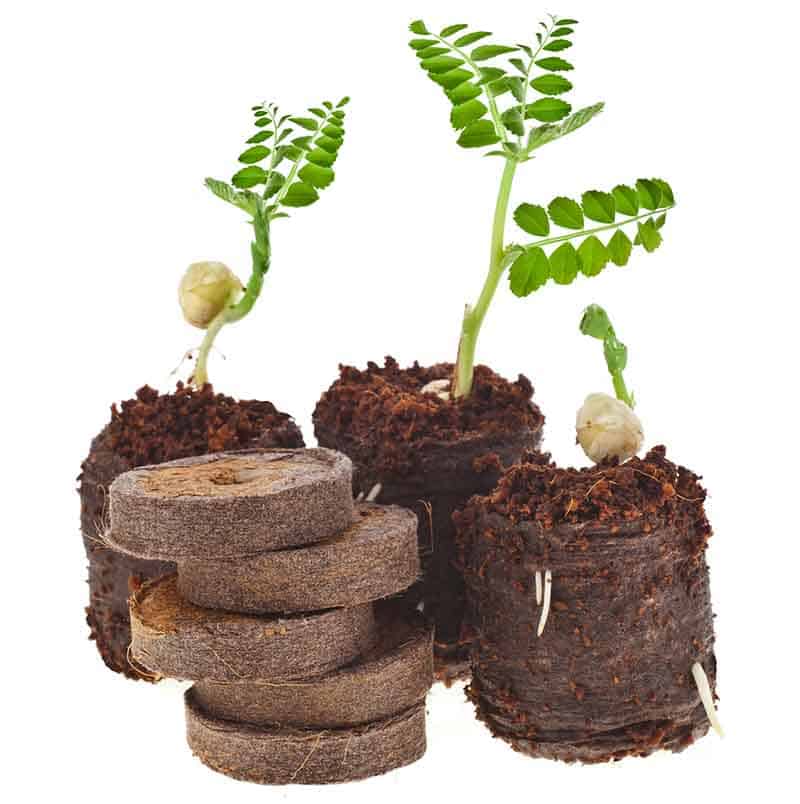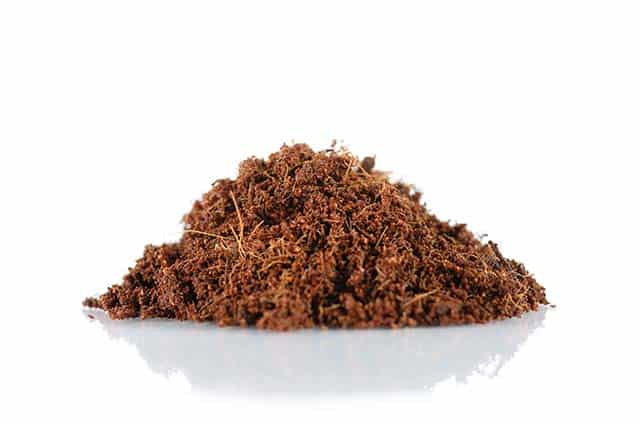If you’ve been thinking of adding some plants to your sleeping quarters, t... Read More
- Hydroponics > Media >
- What is Peat Moss? What is it used for?
What is Peat Moss? What is it used for?
Related Content
-
8 Best Bedroom Plants That Purify The Air & Improve Your Sleep Quality
-
20 Cool & Thoughtful Gifts For Gardeners
window.adthrive.cmd.push(function() { window.adthrive.disableAds(); }); ... Read More
-
All about Spider Mites and How to Get Rid of Them
Home growers and gardeners tend to be quick to learn one of the most uncom... Read More
-
How to Use Bone Meal Fertilizer in Your Garden
When it comes to gardening, your plants are only as healthy as the ground ... Read More
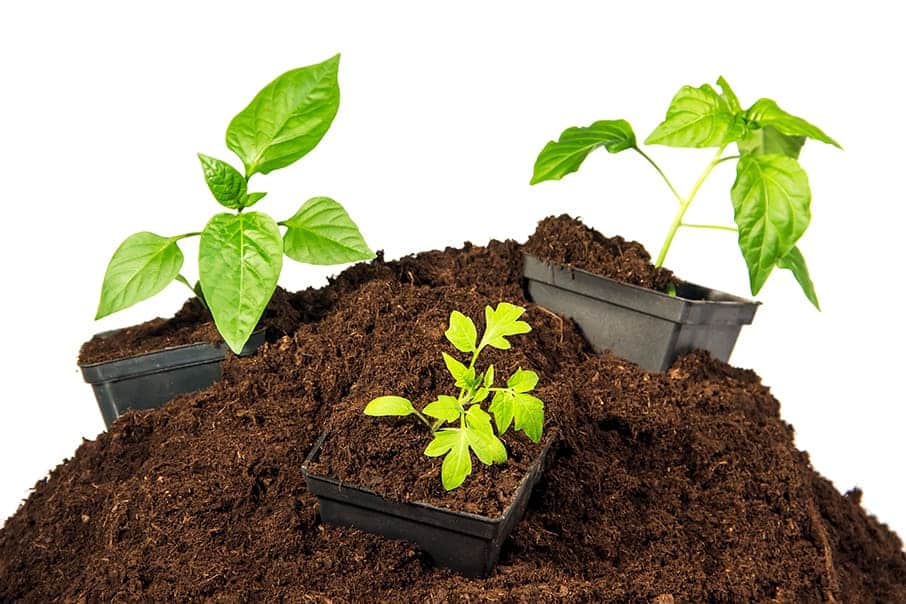
You might have seen that dark brown fibrous material called “Peat Moss” in your father’s garden or any nursery and garden stores.
But did you know that though Peat Moss is very useful as a gardening medium and is used a lot either as potting soil mix or as a hydroponic growing medium, it stirs lots of environmental controversial talk?
Lots of growers, even those who use it much often, don’t know thoroughly what Peat Moss is, how it originates, how to properly use this material in the garden, and understand what this medium means to the earth.
That’s the purpose of the post. I’ll get into all of these.
What is Peat Moss?
Peat moss is the dark brown fibrous product of sphagnum moss and other organic materials that decompose in peat bogs over thousands of years.
It doesn’t really decompose because peat moss is so anaerobic and this process takes very slowly.
The decomposition process happens without the presence of air, which slows the development rate. It only gains less than one millimeter in depth each year.
One day, the producers show up. They drain the bog, dig the peat moss layers.
They process it, get it dried, package it in a bag, and sell it to the gardening stores.
Peat Vs. Peat Moss Vs. Sphagnum Moss
People commonly call peat as peat moss even though they are somewhat different.
Peat is the product created from organic matters that submerged into the bogs.
Peat can be formed from different materials, but a large percentage of the peat harvested is composed of sphagnum moss. And hence the name peat moss.
Meanwhile, sphagnum moss is a plant grown on the surface layer above of the peatland, soil or a swamp. It thrives in cold and wet weather. As time goes by, the old parts sink into the lower layer. The process of decomposition takes place very slowly in the oxygenless layer. But it is patient, and over a long period of millennials, a thick layer of dead homogeneous material named peat moss is formed.
History of Peat Moss
Peat was dried and was used as a source of fuel in some countries for centuries. Because, like any fossil fuels, it is rich in carbon. It was only till the 1940s that peat has a place in horticulture.
Today, peat moss is fairly popular used as soil amendment, soilless mix, seed starting, mushroom casting, etc.
Availability
Peat mosses are commonly found in bogs and wetlands of the northern hemisphere of the earth.
Almost all of the peat moss sold in the US come from the vast sphagnum moss area in Canada.
But Russia has the largest amounts of peatland around the world.
Canada is the area containing the second-biggest amounts of peat moss in the world with 25% of the world moss. This is followed by lots of countries, including Finland,Sweden, etc.
About 3% of the earth’s surface is contained with peat bogs that have been developed over a period of thousands of years.
Mining
Many countries have strict rules when it comes to mining peat moss. For example, any peat harvested in Canada is carefully analyzed first whether it has any long-term effect on the environment. And it must be mined in sustainable and conservable ways.
The process is as follows. First, dig a network of ditches along the peatland to drain the water. Second, remove the surface vegetation to get the peat exposed. Third, level the harvest field to prevent drainage of the surface runoff. Fourth, harrow the top layer to speed up the drying process of the peats. Fifth, after some days, people suck up the dry peat layer, often with a large vacuum harvester.
And finally, the harvested peats will be transported to a processing firm for cleaning, drying and screening into different labels and packaging.
Benefits of Peat Moss
Cleanliness
You will love this characteristic the most if you know that lots of growing materials, especially organic ones are not really clean. With peat moss, you’ll find it easy to work with. And if you happen to drop some wet mosses, just pick it up, get it dried, or sweep it up.
Sterile
One of the best features of peat moss is its sterility. It doesn’t have any bacteria, fungus, harmful chemicals, and no weed seeds. This makes the material perfect for seedlings, which are quite vulnerable to the surrounding environment.
Moisture retention
Peat moss can absorb and retain water very well. This makes a great place for seed starting and as the mixes with other growing materials.
Availability
It is handy to find peat moss in most of the garden stores or nurseries in the US.
Acidic
Most of peat moss low in pH from 3.5 to 6 on average depending on the source of the peat moss is mined. It is very suitable for acid-craving plants such as strawberries, blueberries.
Does not compact
Even though peat moss absorbs water well, it does not compact, unlike soil. The problem with compaction is that it makes it hard to create any space for the water and the air to pass through. By introducing peat moss to any compact material, the compaction problem is solved and makes the growing mix drain better.
Downsides of Peat Moss
Virtually devoid of nutrients.
Unlike other organic materials such as manure compost, peat moss is very poor in nutrients. It also doesn’t contain any helpful microbes. So that means you can use peat moss as an amendment to the soil and other materials, but you cannot use it alone and expect the plants will grow strongly and properly.
Dryness issue
Even though peat moss can hold water well up to 10 times of its weight and is a great supplement to the soil. But when it becomes completely dry, it takes a long time to get the moisture.
So when starting seeds with peat moss alone, be sure to get it moisture enough. Or it’s a good idea to mix it with soils and some other soilless media.
Watch the pH of your mixture
Though strictly acid-hungry plants love peat moss with its low pH level, that does not mean others will do. You will need to add some pH-high materials like lime to create a neutral or alkaline environment. And be ready to monitor the pH level of the growing environment to ensure it does not drift too much. Another issue with soil pH is that with too many amendments added to change pH level, the soil can suffer. When it comes to growing, natural soil is ideal.
Non-renewable resource.
As explained, the process of decomposing the peat moss take even thousands of years. So it’s really considered as non-renewable and not eco-friendly. That’s the main reasons that many environmental-aware growers are going away from it, and finding an alternative.
Expensive.
Even though peat moss is not the most expensive growing material, it is also not cheap. Especially if you use peat moss in bulk and price is an issue, a better alternative is compost.
How to use Peat Moss
Now that you have learned about the benefits and downsides of Peat Moss, you may
have had some vague ideas about what peat moss is used for. But I’ll explore into greater details.
Despite coming with lots of nice characteristics for planting plants, peat moss is not commonly used as a standalone product, and in fact, it is not a good growing medium to grow alone. It is often mixed with other ingredients in one-third to two-thirds of the total amounts to improve the mixture quality.
Soil amendment
Peat moss has been used as a soil amendment for so long because it has a lot to offer.
For clay and heavy soils that get compact easily, it softens the soil structure and improves the drainage.
For sandy soil, peat moss helps retain moisture and nutrients for plant roots.
It is often applied with the ratio 2:1. 2 parts of soil per 1 part of peat moss.
If you intend to use peat moss as a soil amendment, you should know that it changes the pH level of the soil. Keep that in mind and, measure and watch out if the pH level drifts too much.
Hydroponic growing
Peat moss is also a good growing medium for the soilless culture. However, people do not use it alone, but often in conjunction with other growing media like perlite, vermiculite.
If you wish to use peat moss for pure hydroponic growing, you should know some facts about why it is not appropriate. Because peat moss is an organic matter, if provided with plenty of oxygen and nitrogen, it will start to decompose. When that happens, the material can compress around plant roots and will choke off your plants.
So better to mix with other materials.
Peat moss is often blended with growing media such as perlite, vermiculite to balance the moisture and aeration.
Seed starting
One of the most useful roles of peat moss is in seed starting because this material is very sterile. Its antiseptic qualities naturally prevent bacteria and fungi from the seeds. It also gives excellent drainage, good aeration, fine texture, and low fertile, making it very ideal for germination.
For this purpose, you can use the peat moss alone or in mixture with some soils. Or remove the hassle by getting the peat pellets sold on the market.
Many people also prefer the soilless mix of peat moss, perlite, coconut coir, vermiculite and others in different amounts. This prevents the diseases, fungus, bacteria, weed seeds, and other bad things commonly found in the soils,
Growing acid-loving plants
Because of its low pH, peat moss is very suitable for vegetables and fruits that require an acidic environment. These include blueberries, pieris, heathers, azaleas, camellias, tomatoes, and so on.
Controversy/ Environmental Concerns
One of the biggest oppositions about peat is that it’s not really renewable. For a material that can not be renewed in several years, but takes millennials to do that, peat moss is not an environmental-aware growing medium to use.
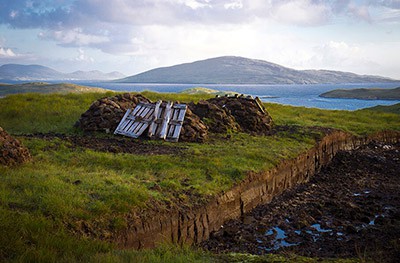
Another concern is that harvesting peat moss is considered not a sustainable practice and must be regulated and done with careful analysis.
As peatland stores a great percentage of carbon. Many environmental groups are beware of peat moss mining. The International Peat Society indicates that the harvesting process emits a large amount of carbon into the atmosphere. And the emission continues even after the mining.
This means ecosystem can be affected. And when global warming topics are getting hotter, people are more beware of the material.
In fact, there are debates between peat manufacturer and conservationist about the long-term effects of peat moss.
Peat Moss Alternatives
People are also looking for a substitute for peat moss, and mostly it boils down to the cost, grower preference, and environmental awareness.
And the alternatives to peat moss mostly share some great qualities with peat moss but is often blended with one another to get its best traits.
Compost
Compost is made from the decayed organic materials like rotted plants, leaves, vegetable scraps and animal manures.
It has a lot of commonalities with peat moss like excellent water holding capacity, and great material for soil amendment.
Compost also consists of decomposed organic material, but it decomposed in the presence of the air. Meanwhile, for peat moss to form the air needs to be absent.
And every gardener can make their own compost or buy it locally.
And of course, there are some differences between these two.
Peat Moss
- low pH
- Does not compact
- Hold better water than compost
- Have uniform composition
- Poor in microorganism
- Environmentally controversial. Mined in a sustainable and controllable manner
- Contains few nutrients
- Does not have weed seeds
- More expensive
Compost
- pH neutral
- Often compact
- Doesn’t hold water as well as peat moss.
- Doesn’t have a uniform composition, depending on the source.
- Rich in microorganisms
- Made from recycled organic matter
- Hold more nutrients
- May contain weed seeds if not properly heated and processed.
- Cheap. Can be free if can create your own.
Coco coir/Coco fiber
Coco coir is the outer husk of the coconut, a by-product of the coconut processing industry. And it is a definitely another excellent alternative for peat moss for over 20 years.
This material is a lot coarser and has larger spaces between their particles, so it is better aerated. Coconut is often manufactured in India, Malaysia, Indonesia, and Vietnam because it is abundant in these places.
Again coco coir shared some great traits with peat moss, including good water retainment, high porosity.
And here are some keys that coco coirwins over peat moss.
- Easier to find
- pH neutral
- More sustainable
- Better air aeration
- Often more expensive than peat moss
It can be used to replace peat moss but better to use with other matters than using alone.
Other choices
There are many other options, which can be listed such as pine bark, PittMoss, Rice hulls, and so on.
Peat Moss For Gardening or not?
No doubt, peat moss is a great material for gardening with all of its benefits and good uses as mentioned above.
But asking that question, you can base your answer on these points to make the best of the material as well as deciding whether to use it or not.
– You should not use it alone. A better idea to mix with other materials to get the best-mixed traits.
– It is great for seed starting.
– Peat moss is excellent for soil amendment.
– Peat moss is not the cheapest. So if you grow in large quantity, and the price is an issue, you can use compost.
– Peat moss is pH low, so suitable for most acid-loving or acid-tolerable plants.
And finally, peat moss is not renewable. So if you are environmentally aware, you may want to reduce your use of peat moss to just seed starting, pot, container, and soilless mixes instead of soil amendment, and lawn work in large quantities. Or you can completely replace it with other alternatives like compost, coco coir, pine bark, and other organic matters.
